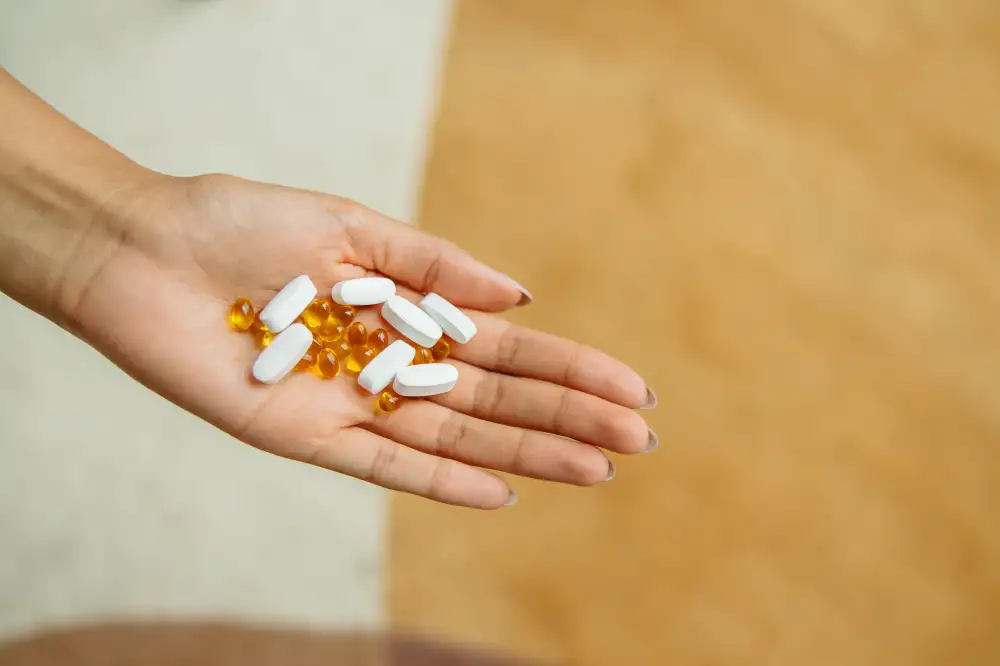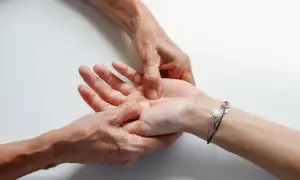Discover Effective Pain Relief Patches for Knees: A Natural Solution for Soothing Joint Discomfort

- Explanation of pain relief patches and their effectiveness
- Benefits of using pain relief patches for knee pain
- Different types of pain relief patches available in the market
- How to choose the right pain relief patch for your knee pain
- Instructions for using pain relief patches correctly
- Precautions and potential side effects of using pain relief patches
- Alternative methods for knee pain relief
Knee pain is a common ailment that affects millions of people worldwide. Whether it's caused by arthritis, injury, or overuse, knee pain can have a significant impact on daily life. Simple tasks like walking, climbing stairs, or even standing up can become excruciatingly painful and challenging. This discomfort often leads to decreased mobility and a reduced quality of life. It's crucial to find effective solutions for soothing joint discomfort and regaining freedom of movement. One such solution gaining popularity is the use of pain relief patches specifically designed for knees. These patches offer a natural and convenient way to alleviate knee pain without relying solely on medication or invasive procedures. In the following sections, we will explore the effectiveness of these patches, their benefits, different types available in the market, how to choose the right one for your needs, instructions for proper usage, precautions to consider, alternative methods for knee pain relief, and the importance of seeking medical advice for chronic knee pain.
Explanation of pain relief patches and their effectiveness
Pain relief patches are a popular and effective solution for soothing knee discomfort. These patches work by delivering medication directly to the affected area, providing targeted relief. The active ingredients in these patches, such as menthol or lidocaine, help to numb the pain and reduce inflammation. The patches are designed to adhere to the skin and release the medication gradually over a period of time, ensuring long-lasting relief. This targeted approach allows for maximum effectiveness in alleviating knee pain and promoting mobility.
Benefits of using pain relief patches for knee pain
Using pain relief patches for knee pain offers several benefits. Firstly, they provide targeted relief directly to the affected area, allowing for faster and more effective pain management. These patches contain active ingredients such as menthol or lidocaine, which work by numbing the nerves and reducing inflammation. Secondly, pain relief patches are convenient and easy to use. They can be applied discreetly under clothing and provide continuous relief for several hours. Additionally, they are non-invasive and do not require ingestion of medication, minimizing the risk of systemic side effects. Lastly, pain relief patches have a lower risk of interactions with other medications compared to oral pain relievers. This makes them suitable for individuals who may be taking multiple medications or have underlying health conditions. Overall, using pain relief patches for knee pain can help improve mobility, reduce discomfort, and enhance quality of life for those suffering from joint discomfort.
Different types of pain relief patches available in the market
There are several different types of pain relief patches available in the market that specifically target knee pain. One common type is the menthol-based patch, which provides a cooling sensation to soothe discomfort. These patches work by numbing the area and reducing inflammation.
Another type of pain relief patch contains ingredients such as capsaicin, which is derived from chili peppers. Capsaicin works by blocking pain signals and providing a warming sensation to alleviate knee pain.
Some patches utilize natural ingredients like arnica or turmeric, known for their anti-inflammatory properties. These patches offer a more holistic approach to pain relief.
Additionally, there are patches that incorporate lidocaine, a local anesthetic that temporarily numbs the area and provides fast-acting relief for intense knee pain.
It's important to note that not all pain relief patches are created equal. Some may contain additional ingredients like camphor or methyl salicylate, which can cause skin irritation in some individuals. It's crucial to read the product labels and consult with a healthcare professional before choosing a patch that suits your needs.
With such a variety of options available, it's advisable to experiment with different types of pain relief patches to find the one that works best for your specific knee pain.
How to choose the right pain relief patch for your knee pain
When choosing a pain relief patch for your knee pain, it is important to consider several factors. Firstly, look for patches that specifically target joint and muscle pain. These patches often contain ingredients like menthol or capsaicin, which provide a cooling or warming sensation to soothe discomfort.
Secondly, consider the size and shape of the patch. Ensure that it covers the affected area adequately and stays in place throughout the day. Some patches are designed specifically for knees, providing extra support and flexibility.
Additionally, check the duration of effectiveness. Some patches offer long-lasting relief for up to 12 hours, while others may need to be replaced more frequently. Consider your daily activities and choose a patch that suits your needs.
Lastly, read reviews and consult with healthcare professionals or pharmacists for recommendations. They can provide valuable insights based on their experience and knowledge.
By considering these factors, you can choose a pain relief patch that effectively targets your knee pain and improves your overall comfort level.
Instructions for using pain relief patches correctly
1. Clean and dry the area around your knee before applying the pain relief patch.
2. Remove the protective film from the patch, exposing the adhesive side.
3. Carefully apply the patch to the affected area, ensuring it sticks firmly.
4. Avoid stretching or pulling the patch while applying it.
5. Leave the patch on for the recommended duration specified by the manufacturer.
6. If necessary, you can cut the patch to fit your knee size, following any guidelines provided.
7. Do not apply more than one patch at a time unless instructed by a healthcare professional.
8. After removing the patch, gently clean any residue left on your skin with soap and water.
9. Dispose of used patches properly according to local regulations.
Following these instructions will help ensure proper usage and maximize the effectiveness of pain relief patches for knee discomfort.
Precautions and potential side effects of using pain relief patches
While pain relief patches can be effective in soothing knee discomfort, it is important to take certain precautions and be aware of potential side effects. Firstly, it is crucial to read and follow the instructions provided by the manufacturer carefully.
One common precaution is to avoid applying the patch on broken or irritated skin. This can lead to further irritation or infection. Additionally, individuals with sensitive skin should perform a patch test before applying it fully to ensure there are no adverse reactions.
Some people may experience mild skin irritation, redness, or itching at the application site. If these symptoms persist or worsen, it is advisable to discontinue use and consult a healthcare professional. In rare cases, allergic reactions such as hives or difficulty breathing may occur. Immediate medical attention should be sought if these severe reactions occur.
It is essential not to exceed the recommended usage time for pain relief patches. Prolonged use can increase the risk of side effects such as skin burns, blistering, or discoloration. It is also important not to apply multiple patches simultaneously unless instructed by a healthcare professional.
Individuals who are pregnant, breastfeeding, have certain medical conditions like diabetes or circulatory disorders, or are taking medications should consult their doctor before using pain relief patches.
Overall, while pain relief patches offer a natural solution for knee discomfort, it is crucial to use them responsibly and seek medical advice if any concerns arise.
Alternative methods for knee pain relief
Alternative methods for knee pain relief include:
1. Physical therapy: Working with a physical therapist can help strengthen the muscles around the knee, improve flexibility, and reduce pain.
2. Low-impact exercises: Engaging in activities like swimming, cycling, or using an elliptical machine can help maintain joint mobility without putting excessive stress on the knees.
3. Weight management: Maintaining a healthy weight reduces the load on the knees, which can alleviate pain and prevent further damage.
4. Hot and cold therapy: Applying heat packs or ice packs to the affected area can provide temporary relief from knee pain by reducing inflammation and soothing discomfort.
5. Herbal remedies: Some herbal supplements like turmeric, ginger, and Boswellia have anti-inflammatory properties that may help reduce knee pain.
6. Acupuncture: This traditional Chinese medicine technique involves inserting thin needles into specific points of the body to stimulate natural pain-relieving responses.
7. Transcutaneous electrical nerve stimulation (TENS): TENS units deliver low-voltage electrical currents to nerve endings through electrodes placed on the skin, helping to block pain signals.
It's important to note that while these alternative methods may provide temporary relief for mild to moderate knee pain, they are not substitutes for medical treatment. For chronic or severe knee pain, it is crucial to consult a healthcare professional for proper diagnosis and personalized treatment options.
In conclusion, while pain relief patches can provide temporary relief for knee pain, it is important to seek medical advice for chronic knee pain. Knee pain can be a symptom of an underlying condition that requires proper diagnosis and treatment. Consulting with a healthcare professional will ensure that you receive the appropriate care and guidance for managing your knee pain effectively. Remember, self-medication may not address the root cause of the problem and could potentially worsen the condition. Prioritize your health and consult a medical expert for long-term relief from chronic knee pain.
Published: 18. 02. 2024
Category: Health



